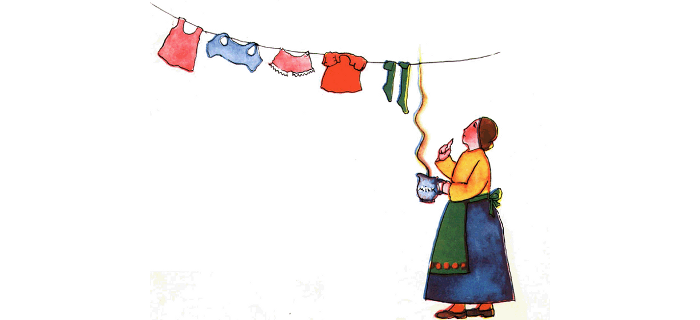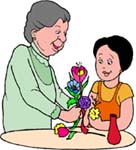Housing Options

Burden, worry, concern, distress, trouble, stress, anxiety, problems: If these are part of your vocabulary when the subject of caring for the elderly comes up, you are not alone. These are very real and need to be addressed no matter how much you love Mama or Papa. There is much involved in caring for the older person in your life. It involves medical, financial (money really does matter even in matters of the heart), legal, emotional, and physical needs.
People older than 70 years of age are the fastest growing age group today. My grandmother is 84 and still lives alone. She is eventually going to be unable to care for herself. I recently drove 500 miles to help her through knee replacement. You too, will probably experience needing to care for an older person sometime in your life. It is not the rare situation anymore.
Our happiness to have our loved ones around longer does not eliminate the need to face some important facts, including how to care for them and not forget ourselves--and so, this series on planning for care of your older family members. We'll begin with housing options, including sharing a dwelling, in-home care, long distance care, and modifying the home.
Where Should Grandma Live?
Whether you live close to her or not, someone has to do something about Grandma (or some other older person) when she is not able to live by or care for herself. There are alternatives to housing your elderly loved one than your home or a nursing home. There are options and there is help.
1. Aging in Place (staying home): The senior stays home, using outside resources as needed. Home modification/adaptations can be made that make it easier and safer for bathing, cooking and climbing stairs . Something as simple as replacing doorknobs with lever handles can make a big difference. Some home modification and repair programs make loans or provide services free of charge or at reduced rates for eligible older people. Ask the Area Agencies on Aging (AAOA) about this.
Public Housing --Low cost housing in multi-unit complexes that are available to low-income families, including the elderly and disabled, typically requiring tenants to pay no more than 30 percent of their monthly income for rent.
Section 202 housing--Senior citizen housing, usually with supportive services such as meals, transportation, and accommodations for the disabled. Eligibility: Private, nonprofit organizations and consumer cooperatives. Occupancy is open to very low-income households with at least one person 62 years of age or older, and the disabled. For information contact your local Housing Authority; there are usually waiting lists. Benefits: lower housing costs, better quality housing, living close to other seniors, no stairs, services (meals, transportation).
U.S. Department of Housing and Urban Development (HUD) does sponsor housing for low-income elderly.
2. Apartments for the Elderly: This is like any other apartment; however the facility has all senior residents and often handyman services and yard care available. Supports social opportunities with other senior citizens. Known as Retirement Villages, they are for a totally independent senior citizen.
3. Shared Dwelling: The house or apartment is shared with two or more people not related. This type of housing helps the elderly person stay independent longer. Tenants share the expenses of the home. This reminds me of sharing apartments as a young adult. With the right roommate, it's great.
4. Group Shared Residence: Three or more unrelated individuals share common areas such as kitchen, dining and living room while maintaining a private bedroom. Expenses and duties of the household are decided upon mutually.
Benefits of 2-4: Additional income, companionship, security, personal services, opportunities for emotional, social, and in some cases, physical support.
Possible drawbacks of 2-4: Zoning ordinances, landlord/tenant issues, Supplemental Security Income may be decreased (check with local SS office), Food Stamps may be stopped or decreased (contact Dept of Public Social Services), taxes and insurance may be affected.

Living with family is often the best option both financially and emotionally.
5. Congregate Housing is for elderly who are mainly ambulatory and self-sufficient. It is similar to Shared Dwelling, though there are more residents per building. There is a common living/activity area and dining room.
6. Personal Care Boarding Homes--This option provides housing for a number of individuals under the same household and provides personal care, medication assistance and meal preparation. It is similar to Congregate housing, providing more help.
7. Assisted Living offers private rooms or apartments with shared living areas for activities and some housekeeping is furnished. There is more help and some medical care than with shared dwelling situations. Group meals, personal care, meals, medications, and other non-skilled care. Assisted living housing is often necessary when there is difficulty with daily tasks and no one to help. Transportation for appointments, shopping and other needs are provided. (Also called personal care homes, sheltered housing, residential care, homes for adults, managed care, catered living, group homes, and board and care.)
8. Nursing Home--Buildings with full-time professional staff and medical care; most are two persons per bedroom. This is intended for those adults who cannot take care of daily tasks or personal care, and need medical care. (Also called, Intermediate/ Skilled Nursing Facilities, 24-hour residential facilities.)
9. Residing with Family--The older adult lives with the family and is taken care of by the family with or without outside help. This is often an alternative for financial and emotional reasons. Many outside supports and organizations are available for your use if you have an elderly person living with you. These will be discussed in Reviews of this series.
10. Continuing Care Residences have all types of care and may have apartments, congregate housing, small hospital, and nursing home all in the same or nearby buildings. As needs change the senior can be attended to as appropriate without changing facilities.
Whatever you decide, your choice will require a balance of financial, emotional and personal needs. Evaluate which of these options best satisfies your needs, and your loved one's needs.
Barbara Richardson is 37 years old and lives on 13 acres in Indiana with her husband and three children, and a dog and cat. She loves fishing, cartooning, writing, animals, cooking, bread baking, and her family, not specifically in that order. Barbara says, "I am proud to be a stay at home and a wife. I take pride as well in living within my income and not being a slave to debt."
